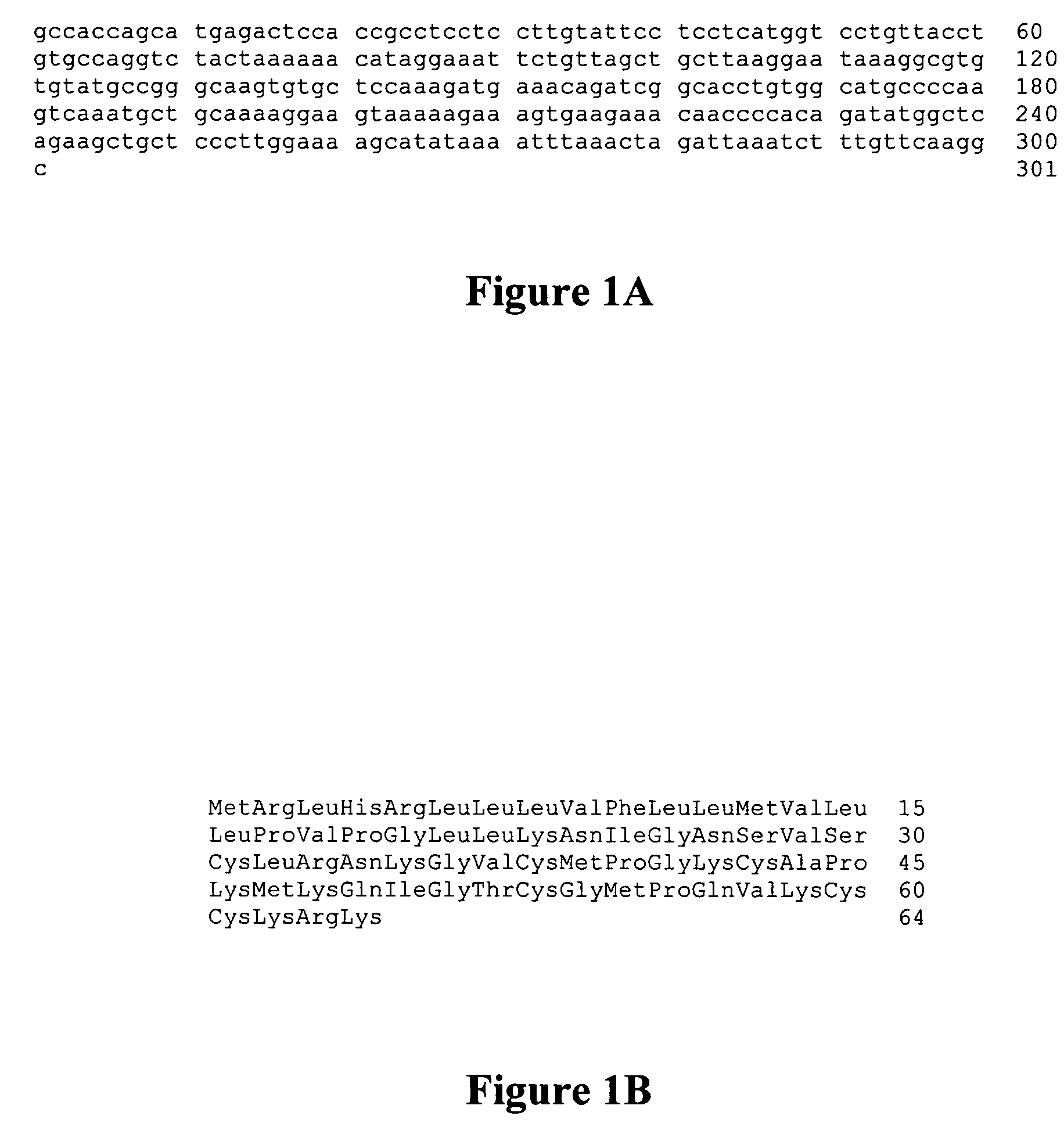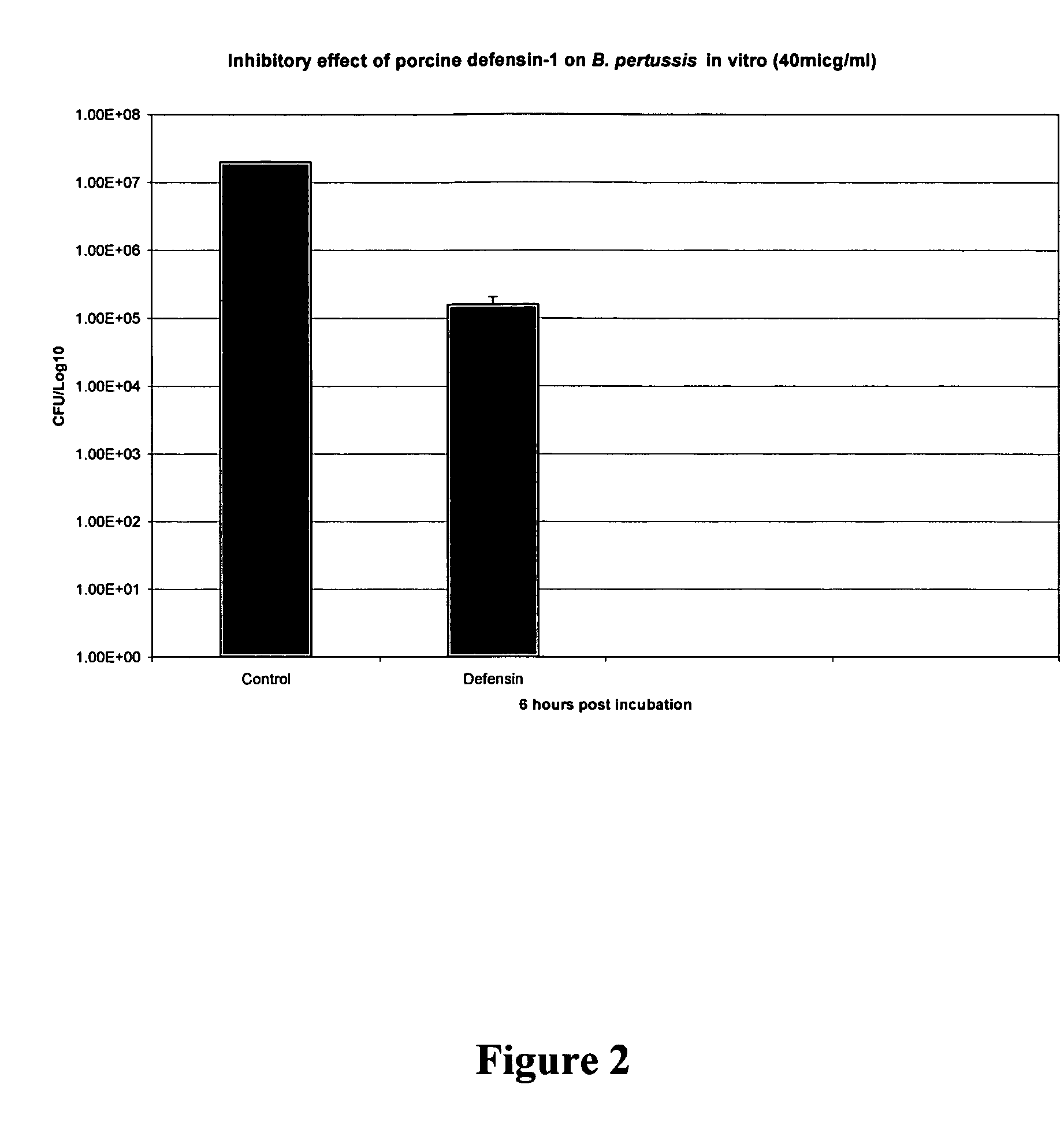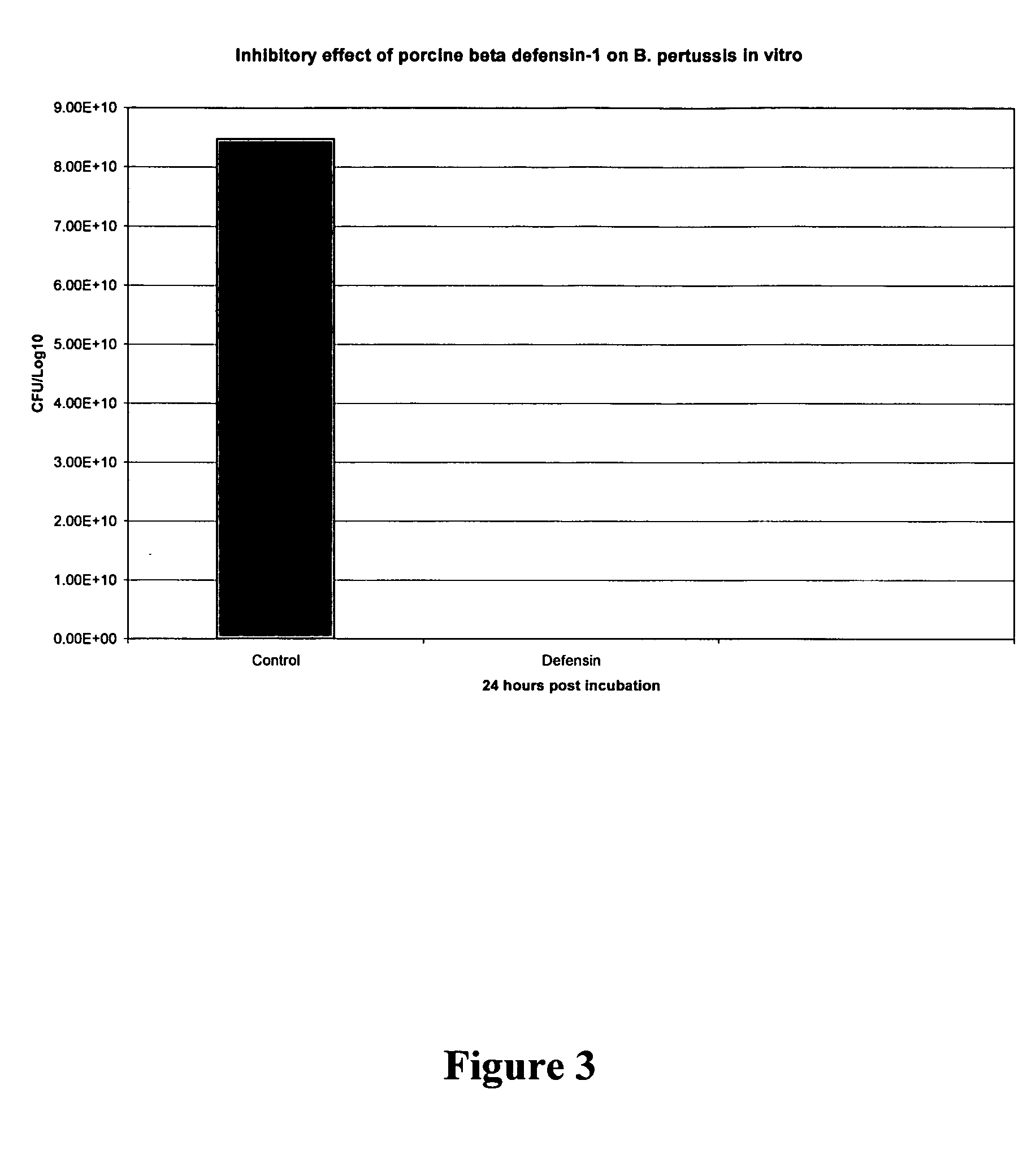Methods for treating and preventing microbial infections
a technology for preventing microbial infections and treating them, applied in the field of porcine defensins, can solve the problems of not all children develop classical diseases, fail to protect against subclinical infections, and low titer correlation, so as to improve the immune response, and improve the effect of accuracy and efficiency
- Summary
- Abstract
- Description
- Claims
- Application Information
AI Technical Summary
Benefits of technology
Problems solved by technology
Method used
Image
Examples
example 1
Bactericidal Activity of pBD-1 In Vitro
A. Bactericidal Activity of Defensin against B. pertussis
[0134] To examine the bactericidal effect of defensin against B. pertussis, 10 μl of bacterial suspension (OD600 nm of 0.2) was added to 200 μl of Stainer and Scholte (SS) broth medium with or without chemically synthesized defensin at different concentrations in a 96 well plate and incubated at 37° C. for up to 30 hours. At the end of each incubation period (6 hrs, 18 hrs, 24 hrs, 30 hrs), the culture medium was immediately removed for quantification of viable bacteria. The culture medium with or without defensin was plated onto BG agar plates and incubated at 37° C. for up to 4 days after which time the number of colonies were counted. The number of surviving bacteria was estimated by colony-forming units (CFU). The results were confirmed by three independent experiments compared with results from control bacterial culture (no peptide).
[0135]FIG. 2 shows the susceptibility of B. per...
example 2
Specificity of Antimicrobial Peptides
A. Bactericidal Activity of pBD-1 against B. pertussis and B. bronchiseptica
[0140] The bactericidal activity of pBD-1 against an experimentally introduced human pathogen, B. pertussis, and a natural pathogen of pigs, B. bronchiseptica, was compared in vitro using 40 μg / ml of pBD-1. The growth of B. pertussis was inhibited by 40% after 6 hours and by 100% after 24 hours (FIG. 7A). In contrast, the growth of B. bronchiseptica was unaffected at these time points (FIG. 7B). In addition, B. bronchiseptica was resistant to pBD-1 even at very high concentrations (160 μg / ml) and for up to 48 hours incubation. Thus, these results indicate that B. bronchiseptica, a natural pathogen of pigs, has evolved a means of evading the porcine innate immune system.
B. Bactericidal Activity of hBD-2
[0141] The bactericidal activity of hBD-2 against both B. pertussis and B. bronchiseptica was measured. Although, BD-2 is the human defensin most homologous to pBD-1, ...
example 3
Bactericidal Activity of BAL Fluid from Piglets
A. Bactericidal Activity of BALs against B. pertussis
[0142] Bactericidal activity of bronchoalveolar lavage (BAL) fluid obtained from non-infected piglets was analyzed against B. pertussis in vitro. Non-infected piglets, either 4-5 weeks old or newborn piglets (6 hours old, colostrum-deprived or colostrum-fed), were euthanized and BALs were collected in Stainer-Scholte (SS) medium. The BAL fluid was obtained by filling the lungs with 10 ml of SS medium and withdrawing as much fluid as possible (this procedure was performed once). Alveolar macrophages and other cells were removed by centrifugation at 500 g for 10 minutes. BALs (290 μl) were co-cultured in microtiter plates with 10 μl bacterial suspension containing 5-7×106 CFU of B. pertussis at 37° C. Supernatants were plated onto BG agar plates at different time points to evaluate the number of viable bacteria. The sensitivity of B. pertussis to synthetically derived pBD-1 and human...
PUM
| Property | Measurement | Unit |
|---|---|---|
| concentrations | aaaaa | aaaaa |
| concentrations | aaaaa | aaaaa |
| concentrations | aaaaa | aaaaa |
Abstract
Description
Claims
Application Information
 Login to View More
Login to View More - R&D
- Intellectual Property
- Life Sciences
- Materials
- Tech Scout
- Unparalleled Data Quality
- Higher Quality Content
- 60% Fewer Hallucinations
Browse by: Latest US Patents, China's latest patents, Technical Efficacy Thesaurus, Application Domain, Technology Topic, Popular Technical Reports.
© 2025 PatSnap. All rights reserved.Legal|Privacy policy|Modern Slavery Act Transparency Statement|Sitemap|About US| Contact US: help@patsnap.com



